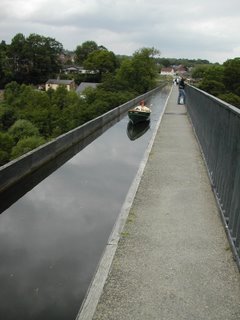Ages ago, I wrote a paper about knowledge work called ‘The Marks are on the Knowledge Worker’. It excited a fair amount of debate at the time and another flurry of articles on the topic appeared a couple of years ago in The Economist and New Yorker prompted by the publication of Abigail Sellen and Richard Harper's book 'The Myth of the Paperless Office'.
I recently re-hashed some of the original thinking for a publisher who wanted to understand the kind of publication which would attract a knowledge worker … here it is…
Some years ago, we studied a selection of knowledge workers in different businesses: design, management consultancy, advertising, broadcasting, marketing, finance, I.T. and research and learned some interesting things about how these people consume printed information.
We found that knowledge workers use information (literally) to inform - to change the form of - their own and their company’s thinking, perspectives, assumptions and ideas so that they and the companies they serve will act differently (and more effectively) in their markets and beyond.
Business processes, in contrast, are designed to achieve the same output regardless of who does them and they rely on input consistency. For knowledge work, on the other hand, diversity of both input and output are the norms. A group of knowledge workers will select different magazines to read and even different articles within a magazine. They’ll underline different paragraphs, scribble different notes in the margin and make different sense of what they read. They will then use the information to achieve different effects on their business. Businesses should expect a different output from each of their knowledge workers – it is the value they add to the business. In fact, depending on them for consistency of output is a very bad plan!
Where paper embodies a business process, it’s vital to keep track of it, so filing is a critical element of any paper-based business process. Losing, or worse still disorganising, paper records can spell business disaster. Paper has a different role for knowledge workers. Once they have been informed by it, its value is discharged and they might as well dispose of it or pass it to a colleague who might be differently informed by it. Until that time, however, it might be very unwise to even put it away. Typical knowledge workers have no stable basis on which to file paper, and as soon as they do, they don’t need to! A knowledge worker’s filing cabinet does not contain knowledge; it does not even record knowledge in the sense that business files record the state of the business. Only the knowledge workers’ heads, and the new plans and procedures they propose, can embody knowledge. The important marks in a knowledge worker’s office are on the knowledge worker, not on the paper they keep.
So, if you walk into an office which operates a business process, you’d be right to be concerned to find piles of paper or messy desks. It would suggest that the processes were not being efficiently operated or were out of control. But you shouldn’t be so concerned if you find that a knowledge worker’s desk and floors are cluttered with piles of paper and magazines, often dismembered and annotated with scribbles and Post-It notes. It may look like a mess to you, but just try “tidying” it and the knowledge worker may rightly complain that you are disrupting his or her thinking.
For knowledge workers, the combination of individual sheets, piles of paper and post-it notes are a wonderfully flexible way to help them work out their ideas, create connections between things and re-create their state of mind if interrupted by a ‘phone call or a weekend break. Knowledge workers appear to use physical space, such as desks and floors, as a temporary holding pattern for inputs and ideas which they cannot yet categorise or even decide how they might use. Filing is uncomfortable for them because they cannot reliably say when they will want to use a particular piece of information or to which of their future outputs it will relate. Interestingly, none of the knowledge workers we spoke to seemed able to organise their thinking other than with material, like printed paper, that occupied physical space.
So what does this mean for publishers?
If your target readership is knowledge workers then:-
Recognise that knowledge workers primarily use magazine articles as stimulants for their own creative thinking. Employ writers who are skilled at this ‘think piece’ approach.
Recognise that knowledge workers seek diversity of inputs. For those knowledge workers who have the greatest impact on their businesses, it would be arrogant to try to decide what is relevant - it’s not something a publisher can predict (and nor can the knowledge worker!). So seek out and include miscellaneous or ‘off-topic’ articles alongside the mainstream ones. Knowledge workers appreciate that.
Recognise that paper, which may be no more than a medium of distribution and presentation for you, is a critical thinking tool for your readers. It’s part of their flexible visual vocabulary with which they create context, new meaning and new models of the world. Expect to see pages torn out of your magazine, scribbled on, covered in highlighter and Post-its, and even scattered on the floor! A neatly filed magazine is a dead magazine from a knowledge worker point of view!























